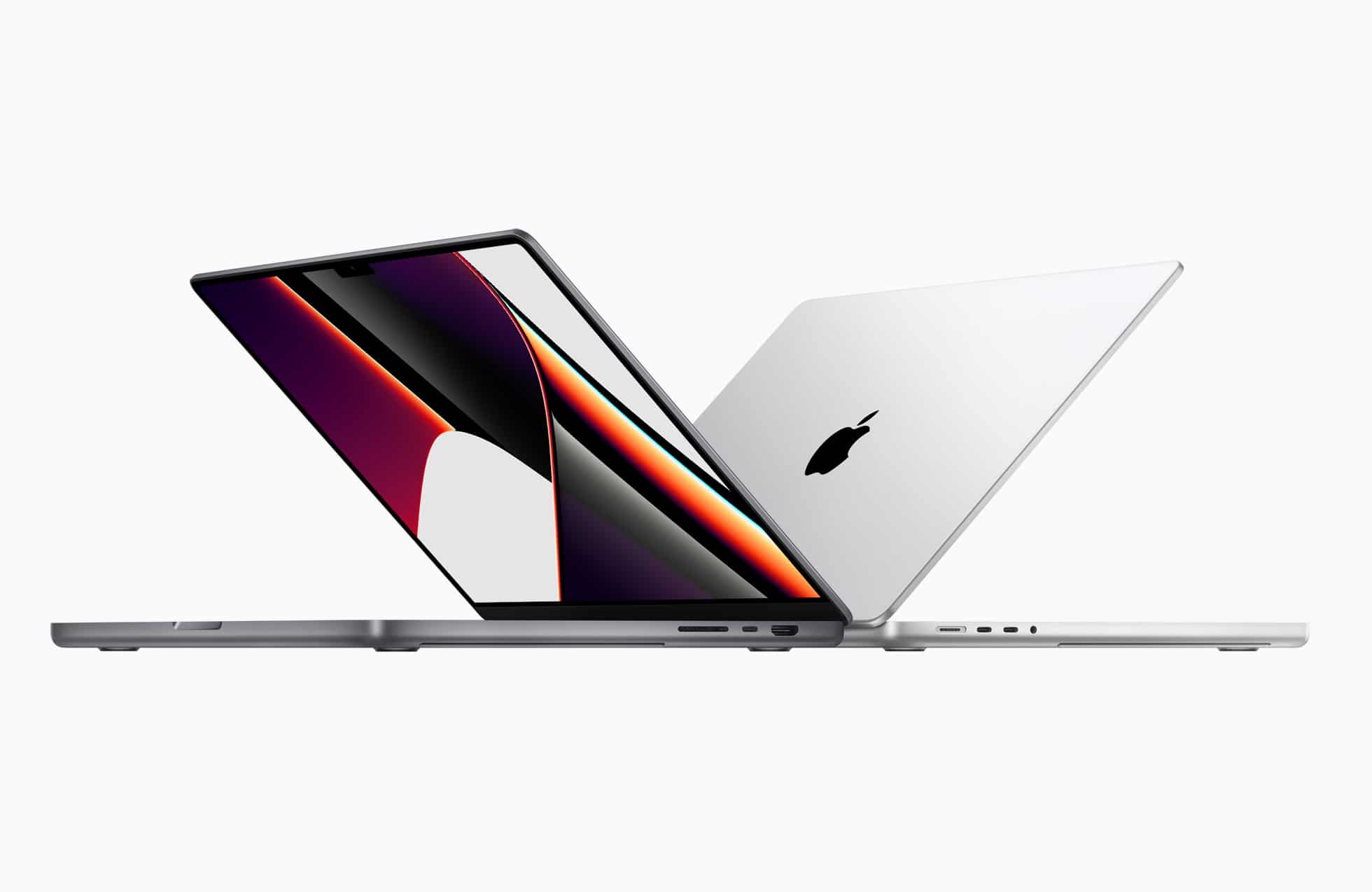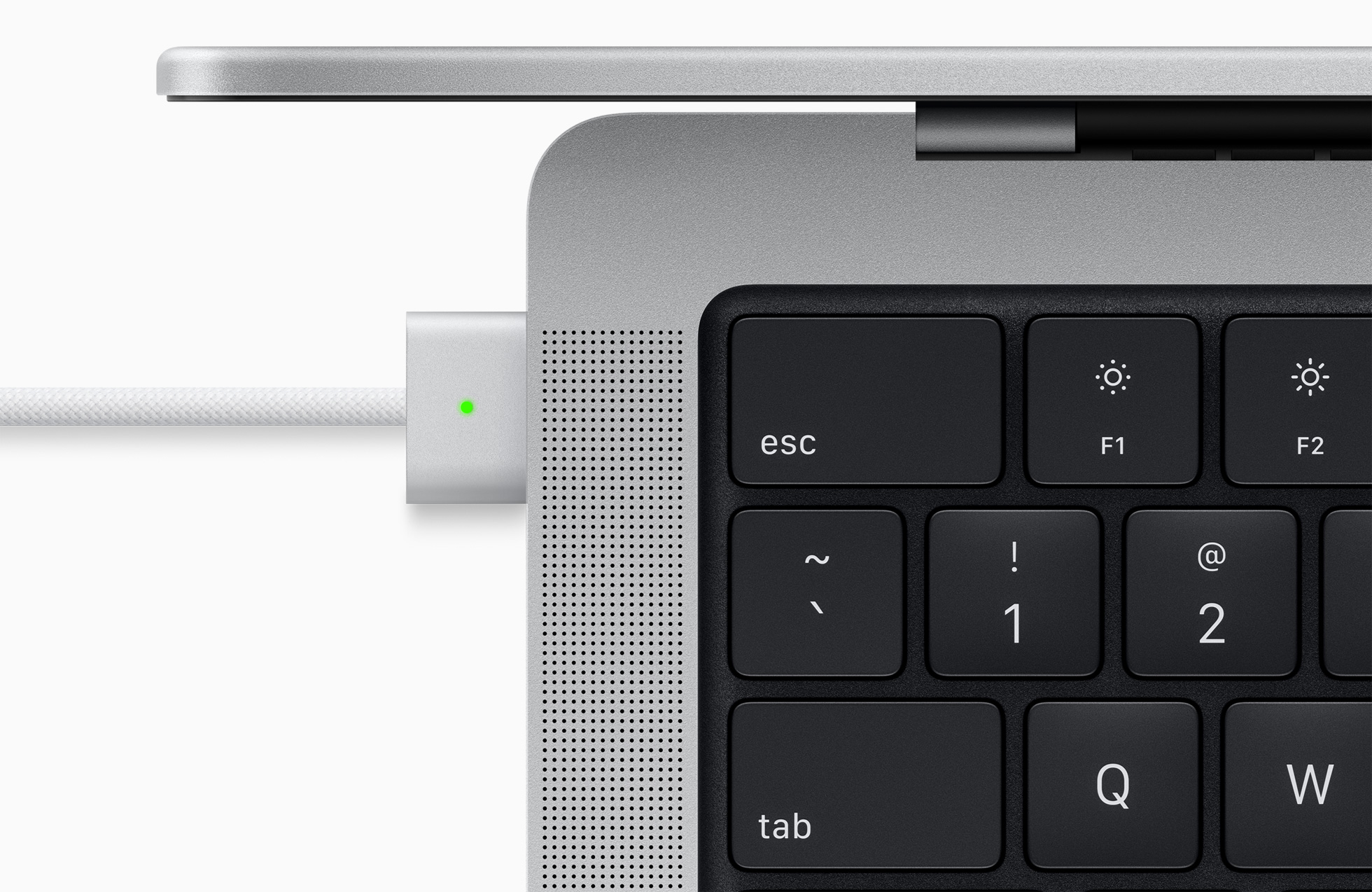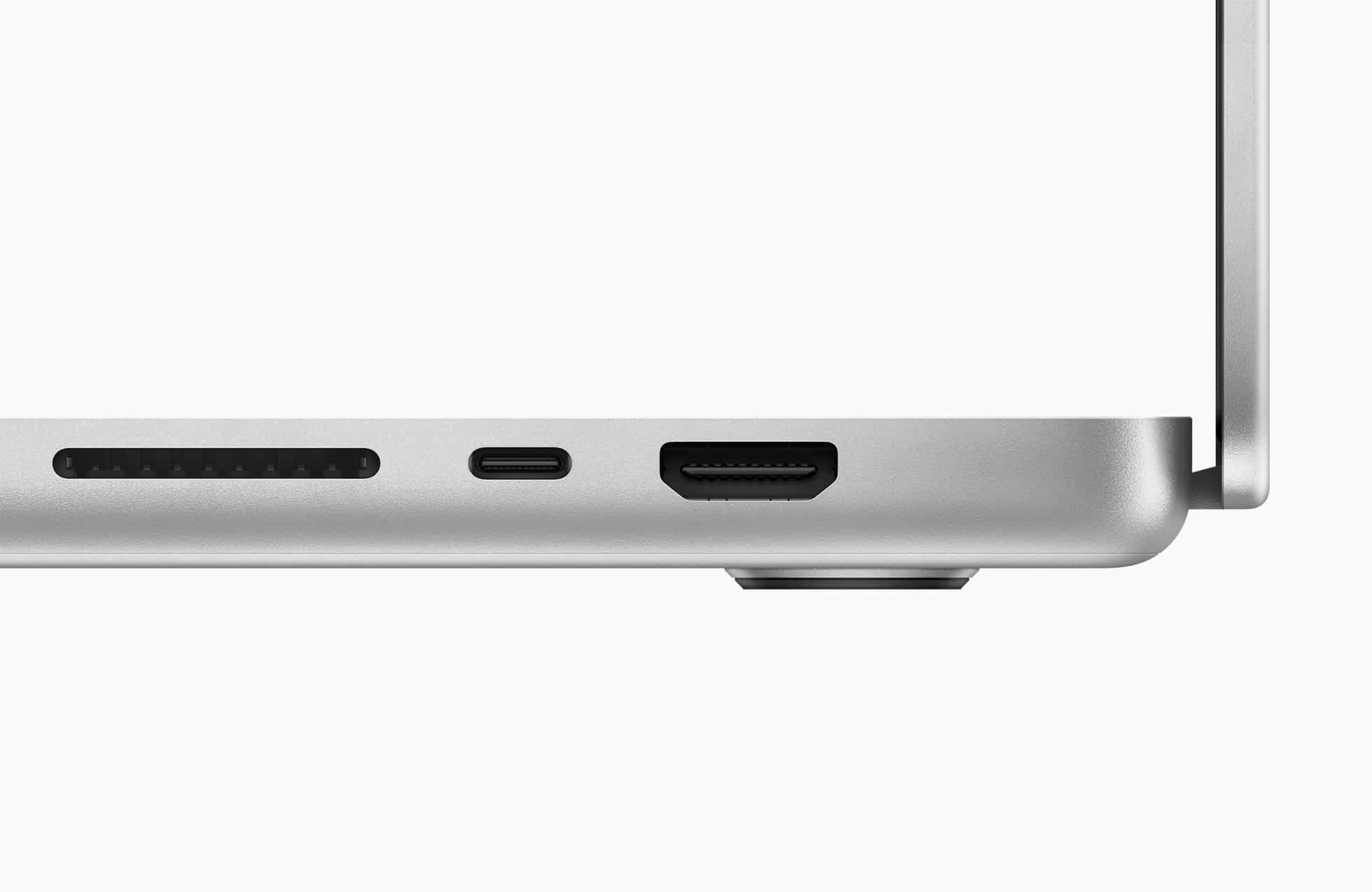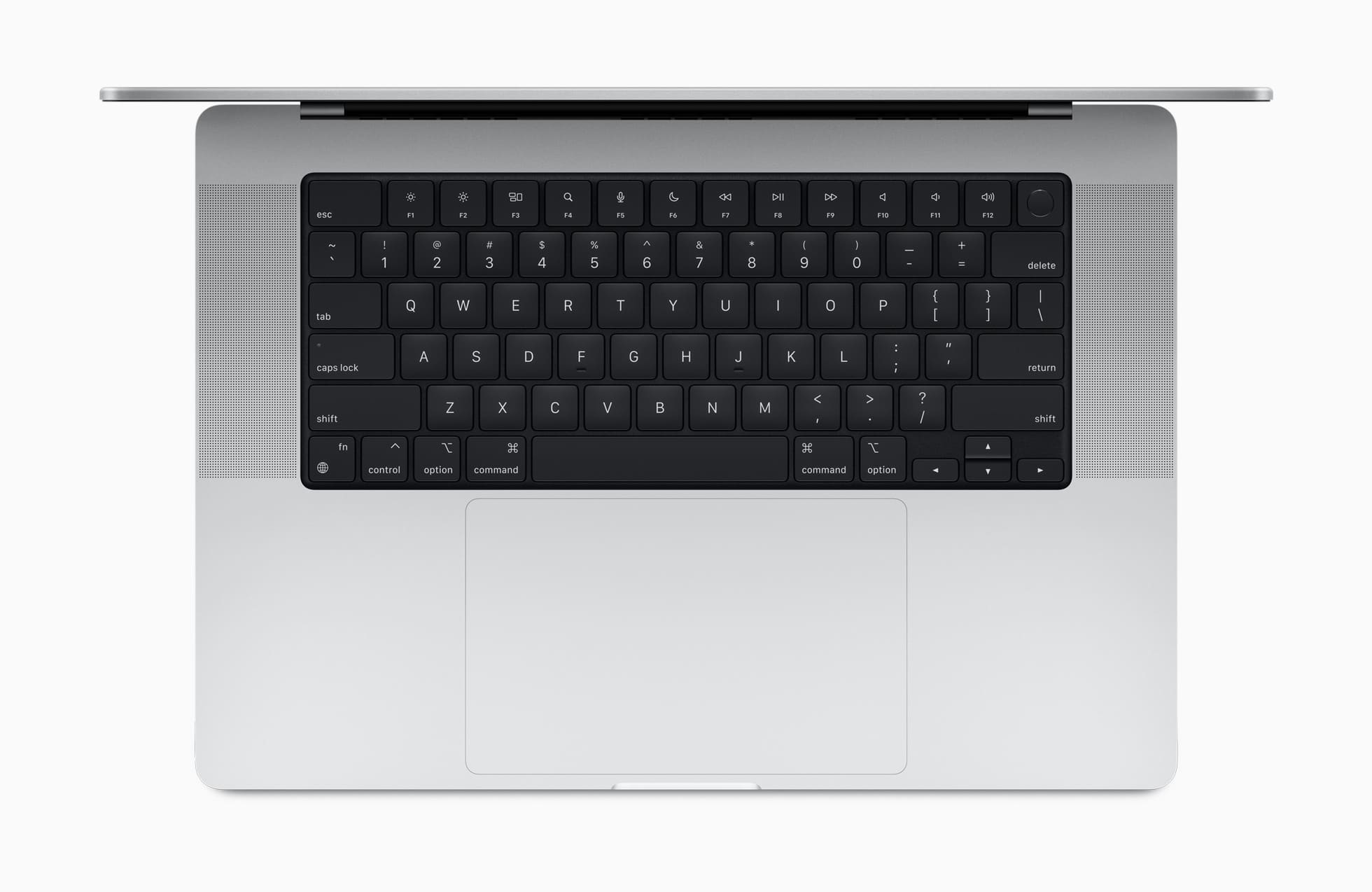The much-awaited Apple Silicon 14-inch and 16-inch MacBook Pro models have finally been announced. These new powerful machines feature M1 Pro and M1 Max chips, an updated design, mini-LED Liquid Retina XDR displays with 120Hz ProMotion technology, MagSafe 3 charging, 1080p camera, 6-speaker audio, studio-quality mics, SD-card slot and HDMI port, and more.
Here are all the features and specifications that you need to know.

2021 14-inch and 16-inch MacBook Pro with M1 Pro and M1 Max
These new Macs are the next-generation MacBook Pro models after the last design was launched back in 2016. With these new machines, Apple has not only introduced a new design and powerful new chips, but the company has also made changes in response to complaints that users had against the previous design. Apple has gotten rid of the Touch Bar and brought back ports like HDMI and SD-card slot that users severely missed. There’s a lot to unpack with these new Macs, so here we go:
Design
The new design is not massively different from previous MacBook Pro models at first glance. However, the company has reduced the size of the bezels and added a notch on top of the display that houses an improved camera. The new MacBook Pro models are slightly heavier and thicker than the previous models too. Here’s a quick comparison:
2020 13-inch Intel MacBook Pro
Weight: 1.4kg
Height: 1.56cm
2021 14-inch MacBook Pro
Weight: 1.6kg
Height: 1.55cm
2019 16-inch MacBook Pro
Weight: 2.0kg
Height: 1.62cm
2021 16-inch MacBook Pro
Weight: 2.1kg
Height: 1.68cm
Display
The new MacBook Pro models feature Liquid Retina XDR displays which borrow the same tech that was introduced in Pro Display XDR and later with 12.9-inch M1 iPad Pro. The mini-LED backlit display supports up to 1,000 nits sustained brightness, and 1,600 nits peak brightness, alongside a 1,000,000:1 contrast ratio, 1 billion colors, P3 wide color gamut, and ProMotion technology for adaptive refresh rate up to 120Hz. This means that users will be able to experience extreme dynamic range with HDR content, whether they are streaming video or editing it.

The display sizes and resolution have also increased across the board. Here’s a comparison:
2020 13-inch Intel MacBook Pro
Resolution: 2560×1600 pixels
Display size: 13.3-inch
2021 14-inch MacBook Pro
Resolution: 3024×1964 pixels
Display size: 14.2-inch
2019 16-inch MacBook Pro
Resolution: 3072×1920 pixels
Display size: 16-inch
2021 16-inch MacBook Pro
Resolution: 3456×2234 pixels
Display size: 16.2-inch

Support for external displays has also improved and depends on the chip that the MacBook Pro uses.
M1 Pro: up to two external displays with 6K resolution at 60Hz at over a billion colors
M1 Max: up to three external displays with up to 6K resolution and one external display with up to 4K resolution at 60Hz at over a billion colors
Performance
The new MacBook Pro models are powered by M1 Pro and M1 Max Apple Silicon. Both of these Macs can be configured with either of the chips, which means that if you are happy with the smaller screen size, you do not have to sacrifice performance. As the M1 Max is the higher-end chip, the cost will increase if the Mac is configured with it. You can read all about the new chips below:
M1 Pro and M1 Max chips announced – 10 core CPU, up to 32 core GPU with up to 64GB memory

The base model for 14-inch MacBook Pro has the following specifications:
- 8-Core CPU
- 14-Core GPU
- 16GB unified memory
- 512GB storage
The base model for 16-inch MacBook Pro has the following specifications:
- 10-Core CPU
- 16-Core GPU
- 16GB unified memory
- 512GB storage
The thermals have also improved, with the new fans allowing for 50% more airflow, even at low fan speeds.
Storage
Apple has configured these new MacBook Pro models with blazing-fast storage with up to 7.4GB/s transfer speed. Both machines have base storage of 512GB and can be configured with 1TB, 2TB, 4TB, or 8TB storage.
Battery
The 14-inch MacBook Pro model provides up to 17-hour battery life, while the 16-inch MacBook Pro provides up to 21-hour battery life. The battery can be charged with the new MagSafe 3 charger, which can charge the MacBooks to 50% in just 30 minutes. They still support USB-C charging and ship with the following chargers:
14-inch MacBook Pro: 67W USB-C Power Adapter
16-inch MacBook Pro: 140W USB-C Power Adapter

Camera and Audio
Apple has finally upgraded the camera and it now supports 1080p video and 2x better performance in low light. It has an advanced image signal processor with computational video that provides sharper results and natural skin tones.
In terms of audio, both Macs are configured with a 6-speaker setup with two tweeters and force-cancelling woofers for 80% more bass. The speakers also support Spatial Audio for Dolby Atmos content.
The 3.5mm headphone jack has also been updated with advanced support for high-impedance headphones. The Macs also feature a studio-quality three-mic array with improved signal-to-noise ratio and directional beamforming.
Ports
The ports on both new MacBook Pro are as follows:
- Three Thunderbolt 4 (USB-C) ports
- HDMI port
- SDXC card slot
- MagSafe 3

Keyboard
The keyboard has also received some improvements. Instead of the MacBook’s aluminum color, it now has a double-anodized black well as the background. The Touch Bar has been replaced by function keys, which are the same size as the rest of the keys on the keyboard. The arrow keys also have an inverted T-arrangement, something that Apple had brought back in recent MacBook Pro models, after changing it with the 2016 design refresh.

Authentication is still done via Touch ID, as there is no Face ID on these Macs, despite the notch.
Connectivity
Both Macs feature 802.11ax Wi-Fi 6 now, alongside Bluetooth 5.0. The previous MacBook models used 802.11ac Wi-Fi.
Price
With the numerous new features, Apple has bumped the prices slightly for these new models. The starting prices for the base models are as following:
14-inch MacBook Pro: $1,999 ($1,849 for education)
16-inch MacBook Pro: $2,499 ($2,299 for education)
Upgrades like faster processor, memory, and storage will add to the costs.
Availability
The new MacBook Pro models are available for purchase today, and shipping will start next week from October 25.